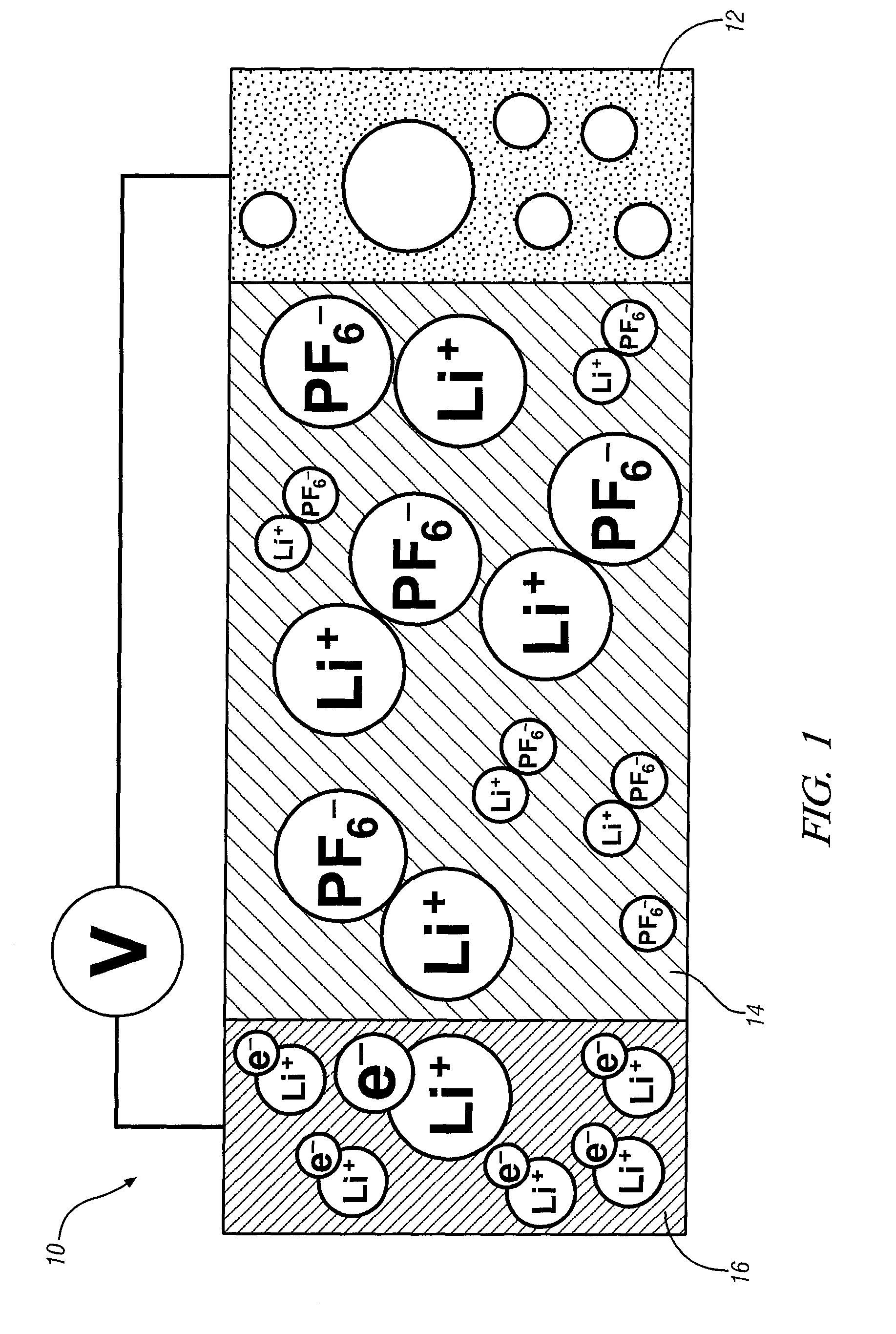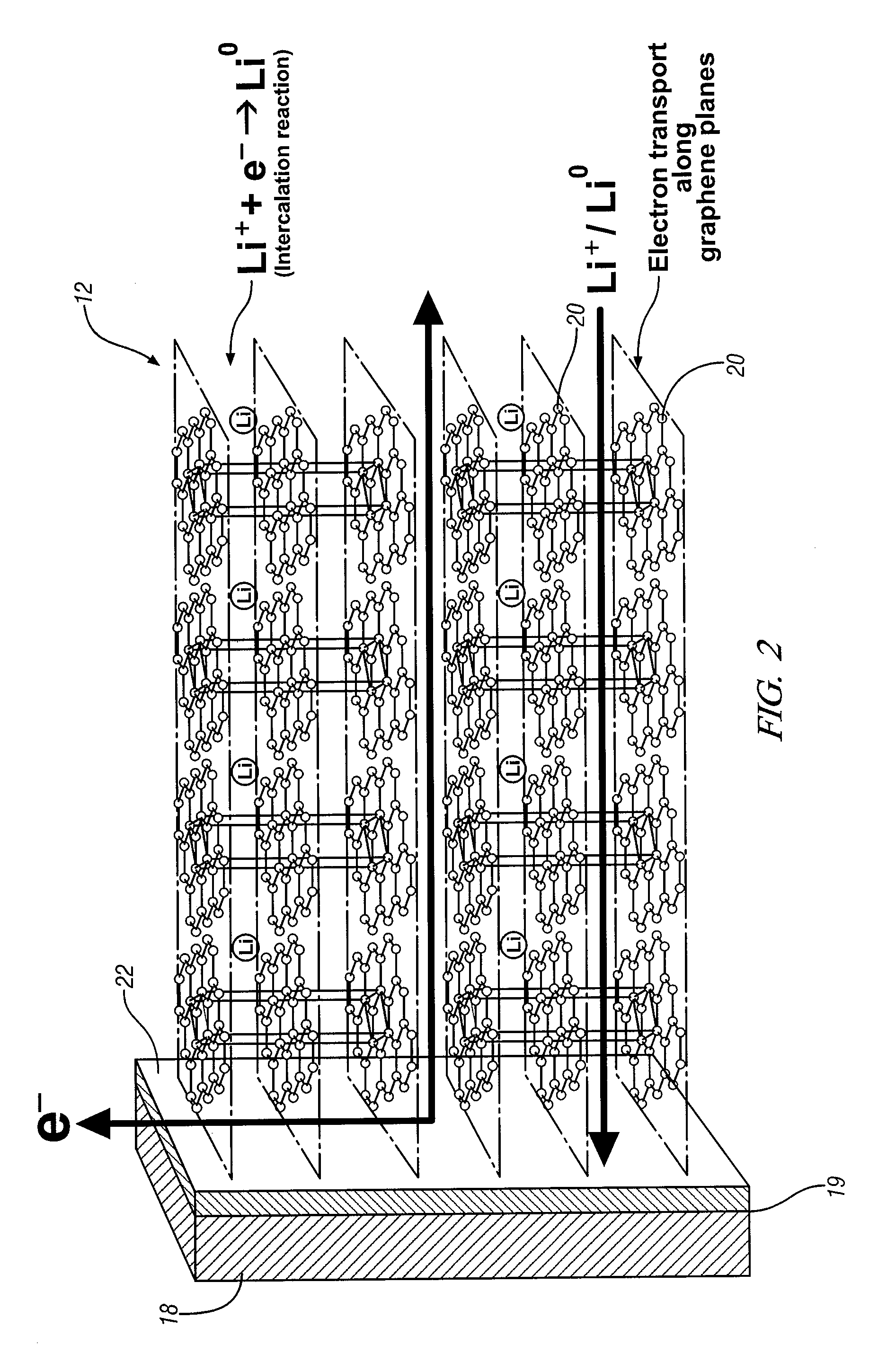Intercalation electrode based on ordered graphene planes
a graphene plane, intercalation electrode technology, applied in the direction of electrochemical generators, cell components, crystal growth process, etc., can solve the problem of not necessarily providing an efficient anode structure, and achieve the effect of efficient and repeated transpor
- Summary
- Abstract
- Description
- Claims
- Application Information
AI Technical Summary
Benefits of technology
Problems solved by technology
Method used
Image
Examples
Embodiment Construction
[0020]This invention provides an electrode including graphene planes positioned normal to a current collector for use as an electrode in an electrochemical cell. The organized graphene planes provide a structure for an intercalated element in the cell. Referring to FIG. 1, in one embodiment of the invention the graphene electrode structure serves as an anode in a lithium-ion battery cell 10, which includes a first electrode 12, an electrolyte 14, and a second electrode 16. The first electrode 12 may be an anode and the second electrode 16 may be a cathode. Embodiments of the invention will be illustrated in the context of a lithium-ion battery cell. In FIG. 1 the lithium-ion battery cell 10 is illustrated in a discharged state, therefore, anode 12 is shown devoid of lithium ions. The electrolyte 14 is illustrated as a suitable electrolyte material comprising lithium ions and hexafluorophosphate ions. The lithium ions have been transported into cathode 16 during discharge of the batt...
PUM
| Property | Measurement | Unit |
|---|---|---|
| temperature | aaaaa | aaaaa |
| thickness | aaaaa | aaaaa |
| temperatures | aaaaa | aaaaa |
Abstract
Description
Claims
Application Information
 Login to View More
Login to View More - R&D
- Intellectual Property
- Life Sciences
- Materials
- Tech Scout
- Unparalleled Data Quality
- Higher Quality Content
- 60% Fewer Hallucinations
Browse by: Latest US Patents, China's latest patents, Technical Efficacy Thesaurus, Application Domain, Technology Topic, Popular Technical Reports.
© 2025 PatSnap. All rights reserved.Legal|Privacy policy|Modern Slavery Act Transparency Statement|Sitemap|About US| Contact US: help@patsnap.com



